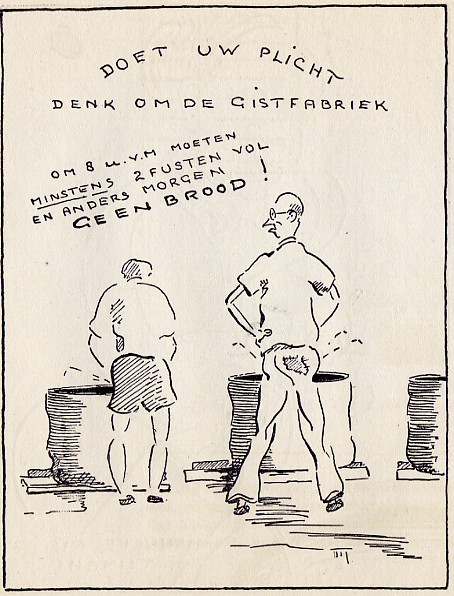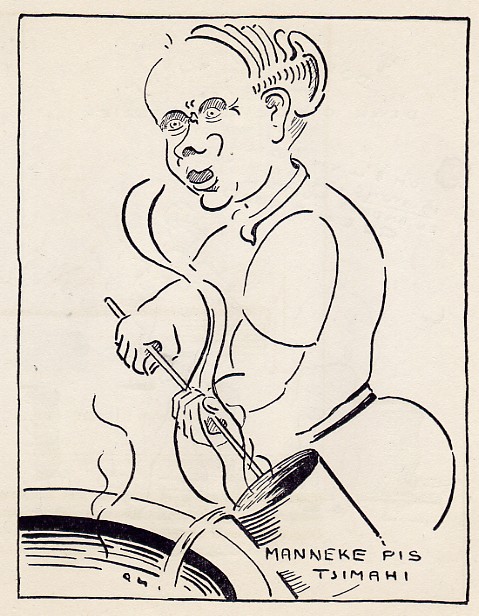Yeast from Urine in Tjimahi Camp
In my book I say very little about the men’s camp, Tjimahi Camp, where my father was interned. These two pictures however are referred to (but are not reproduced) in the book.
Some clever chemist in the men’s camp had worked out a process for producing a liquid yeast from urine. This discovery has been immortalized in these two pictures.
One is an image of the presumed chemist, also referrred to in the caption as “manneke pis”. That name would have been familiar to anyone living or growing up in the Netherlands or Belgium. In a corner of the Grand Place of Brussels there stands a bronze statue of a little boy (it is also a little statue- half a meter tall) peeing day and night, and that statue has the same name. It is a relic from World War 1 and was erected by a company of soldier who had befriended the boy- probably an orphan.

The other caption says something to the effect of : “Do your duty gentlemen, otherwise no bread tomorrow.” For about six months our women’s camp received a daily supply of this yeast for breadmaking from Tjimahi (about 10 km away). It was delivered on the back of an improvised truck made by replacing the rear end of an automobile with a flat bed, and contained in one or two 45 gallon drums.
The cartoons were drawn by M.G. Hartley between 1942 and 1945.
These images relate to Bandung and our time there. We were first interned in the city where we were living, Bandung, and only in May 1945, shortly before the end of the war, were moved to Batavia ( Jakarta) and the Tjideng Camp.

Leave a Reply